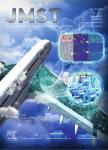Interfacial microstructure evolution and bonding mechanisms of 14YWT alloys produced by hot compression bonding
Interfacial microstructure evolution and bonding mechanisms of 14YWT alloys produced by hot compression bonding作者机构:Shenyang National Lab. for Materials Science Institute of Metal Research Chinese Academy of Sciences Shenyang 110016 China School of Materials Science and Engineering University of Science and Technology of China Shenyang 110016 China
出 版 物:《Journal of Materials Science & Technology》 (材料科学技术(英文版))
年 卷 期:2019年第35卷第8期
页 面:1671-1680页
核心收录:
学科分类:08[工学] 0805[工学-材料科学与工程(可授工学、理学学位)]
基 金:financial support from National Key Research and Development program (Grant No.2016YFB0300401) National Natural Science Foundation of China (Grant Nos. U1508215, 51774265) key Program of the Chinese Academy of Sciences (Grant No. ZDRW-CN-2017-1)
主 题:Oxide dispersion strengthened steels Hot compression bonding Dynamic recrystallization Tensile property
摘 要:Hot compression bonding was first used to join oxide-dispersion-strengthened ferrite steels(14 YWT)under temperatures of 750–1100℃ with a true strain range of 0.11–0.51. Subsequently, the microstructure evolution and mechanical properties of the joints were characterized, revealing that the 14 YWT steels could be successfully bonded at a temperature of at least 950℃ with a true strain of 0.22, without degrading the fine grain and nanoparticle distribution, and the presence of inclusions or micro-voids along the bonding interface. Moreover, the joints had nearly the same tensile properties at room temperature and exhibited a similar fracture morphology with sufficient dimples compared to that of the base material. An electron backscattered diffraction technique and transmission electron microscopy were systematically employed to study the evolution of hot deformed microstructures. The results showed that continuous dynamic recrystallization characterized by progressive subgrain rotation occurred in this alloy, but discontinuous dynamic recrystallization characterized by strain-induced grain boundary bulging and subsequent bridging sub-boundary rotation was the dominant nucleation mechanism. The nuclei will grow with ongoing deformation, which will contribute to the healing of the original bonding interface.



